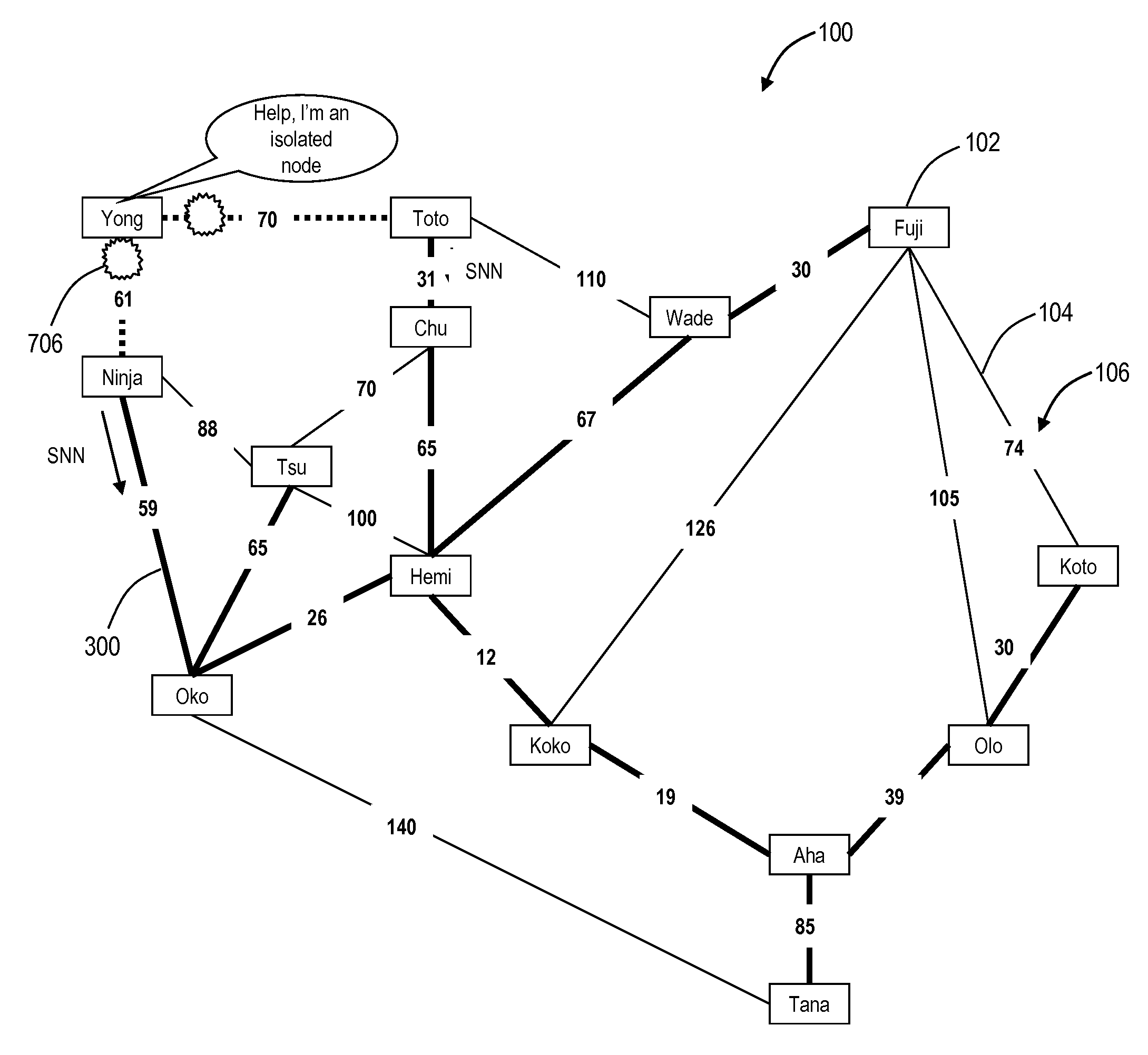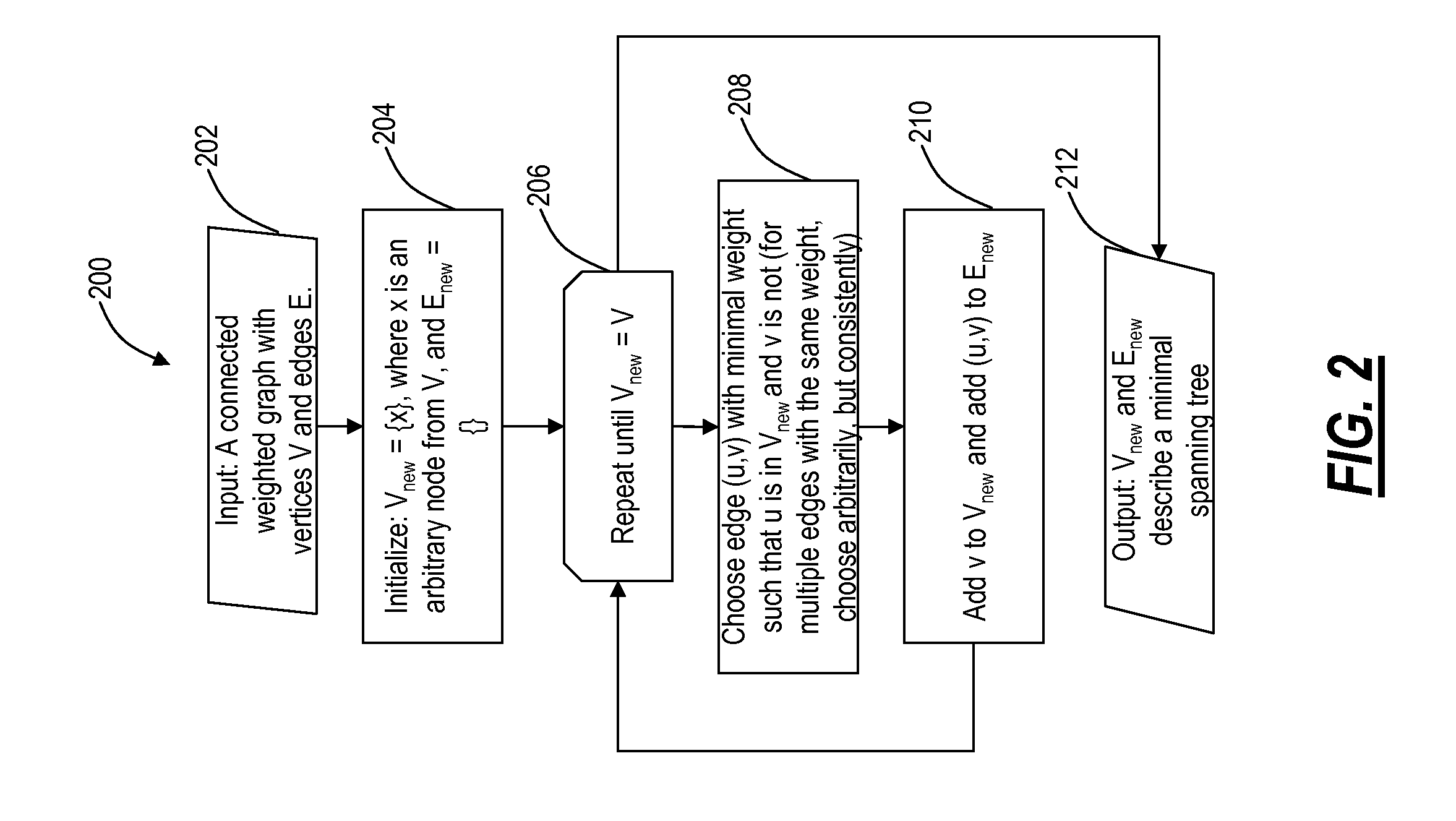Spanning tree flooding backbone systems and methods for link state routed networks
a backbone system and link state technology, applied in data switching networks, frequency-division multiplexes, instruments, etc., can solve the problems of bringing the network down, overloading the routing control processor, and wide-spread loss of topology database information, so as to reduce the transmission of messages
- Summary
- Abstract
- Description
- Claims
- Application Information
AI Technical Summary
Benefits of technology
Problems solved by technology
Method used
Image
Examples
Embodiment Construction
[0024]In various exemplary embodiments, the present invention creates an efficient topology (i.e., a flooding backbone) for distributing topology messages in link state routed networks and efficiently repairing that “flooding backbone” when a failure occurs. The present invention utilizes a simply method of maintaining and reconstructing the topology after a fault has occurred in the network. As described herein, flooding is a robust and simple mechanism to implement but is very inefficient in link state routed networks using protocols such as PNNI and OSPF. Flooding of link state updates entails broadcasting a link state update message in an OSPF network out of all interfaces except the one upon which it was received. If the node generates an LSA due to one of its interfaces, it broadcast the LSA out of all interfaces that are still up and running, and this process is repeated at each node, until all nodes in the topology have receives the update message, which leads to a vast numb...
PUM
 Login to View More
Login to View More Abstract
Description
Claims
Application Information
 Login to View More
Login to View More - R&D
- Intellectual Property
- Life Sciences
- Materials
- Tech Scout
- Unparalleled Data Quality
- Higher Quality Content
- 60% Fewer Hallucinations
Browse by: Latest US Patents, China's latest patents, Technical Efficacy Thesaurus, Application Domain, Technology Topic, Popular Technical Reports.
© 2025 PatSnap. All rights reserved.Legal|Privacy policy|Modern Slavery Act Transparency Statement|Sitemap|About US| Contact US: help@patsnap.com



